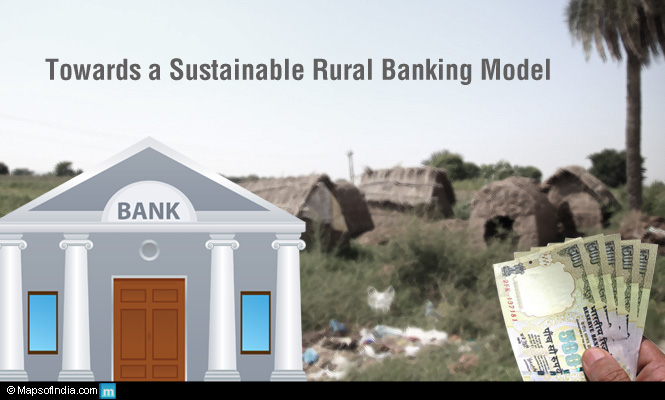The banking sector in India has witnessed a complete transformation in its operations both in its functioning and delivery of services. Today technology being the main driving force for businesses has enabled banking customers to sit back at home and operate their accounts without walking into the banks for anything and everything. As the advancement of technology has taken place with immense use of internet, mobiles and online bill payments banking sector in India has got a new facet altogether.
Now the focus has been shifted to rural banking as most of the banks have become technology enabled and it has been made compulsory for all Indian banks to open at least one-fourth of their incremental branches in the rural areas. As the operational expenses of the public sector banks have shot up extensively, it has become a huge problem for the public sector banks to open up and run them, making the rural banking profitable.
Rural operations to be more profitable: Crisil
But to sustain themselves in the present scenario banks have to be profitable. According to research done by the Crisil Research it has been predicted that if the public sector banks efficiently use technology with higher business per branch and low cost banking channels then they can make their rural operations more profitable in the next five years. A Crisil report called ‘Falling costs, technology tailwinds for rural banking’ has said, “In the last five years, business per branch in the rural areas has grown at a compounded annual growth rate of 7% despite the overall branch network growing at 9% annually. The economies of scale are set to increase further in the years to come.”
According to the report, the recently launched Pradhan Mantri Jan Dhan Yojana will boost the profitability of the public sector banks in the rural India. Under this scheme, by opening up at least on bank account for each and every household in the country, the “financial untouchability” can be eliminated once for all.
The report also states that the Jan Dhan Yojana currently causes challenges for the banks but it would increase business per branch in the longer run.
Business correspondents’ role and revenue
It has been estimated by the Crisil that Rs 100 to Rs 110 is the cost per transaction in rural branches whereas the cost per transaction in urban areas is Rs 70 to Rs 85. The business correspondents enable a transaction at Rs 5 or Rs 7 which is a 15th of the cost of a branch with hand-held devices or by the help of their small stores. It has been predicted by the Crisil researchers that with the help of technology like cloud computing, mobile and virtualization and low cost channels like business correspondents, the business will expand in the near future.
Presently, for most of the business correspondents of the rural areas, the remuneration they are getting from the banks or the corporate business correspondents is not their only source of income as they are either having their own grocery shops or STD booths or they are farmers and also local panchayat members. So this business is their only side business. So it has been seen that though the compensation is much lower but this model can be sustainable.
Cost of transactions to fall
Crisil said that at present these business correspondents are contributing 8% to 13% of total liability based rural transactions which can grow to 25% – 30 % in the next coming years and they are only utilized for liability based transactions, for example, deposits and payment related ones. They have also predicted that by fiscal 2018–’19 the number of transactions through banking correspondents will be increased to 752 million from 329 million in fiscal 2013–’14 as the costs of transactions fall.
The report also says that the overall business growth will be outpaced by the rural banking which will reduce the overall operational costs with economies of scale.
With more and more banking facilities available in the rural areas which comprise 61.35 % of the total population of India, the rural masses play a very crucial and significant role in building up the country’s economy. The presence of a strong banking system in the rural areas will not only improve and uplift the Indian economy from its grass-roots level but also the rural population will have scope to participate and contribute in the country’s economic growth.
Related Information:
Are we too dependent on Computers and Technology






